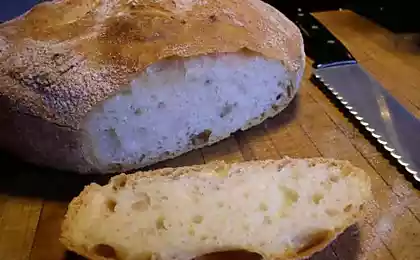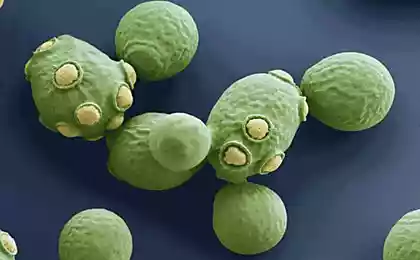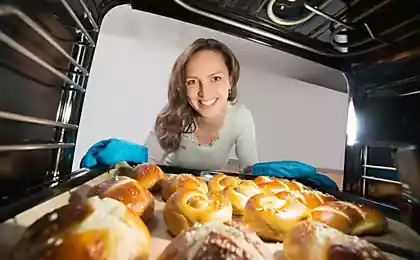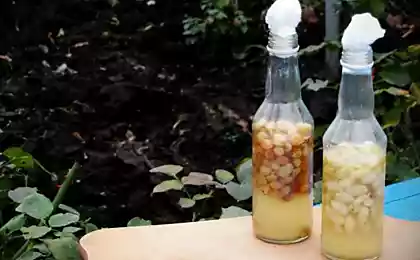589
You should know this! Baker's yeast - is made according to GOST
So what does made baker's yeast, which we consume every day as part of various bakery products?
For making baker's yeast (GOST 171-81) uses the following main and auxiliary raw materials:
- With beet Mellass pH 6, 5 to 8, 5 to sucrose mass fraction of at least 43, with 0% mass fraction of the amount of fermentable sugars at least 44% by OST 0 18-395;
- Ammonium sulphate according to GOST 3769;

- Ammonium sulphate technical, resulting in the production of sulfur dioxide;
- Ammonium sulfate purified in accordance with GOST 10873;
- Ammonium dibasic grade A for NTD;
- Ammonia water technical mark (for the industry), GOST 9;
- Urea according to GOST 2081;
- Diammonium technical (for food industry) according to GOST 8515;
- Drinking water in accordance with GOST 2874 *;
- Phosphoric acid thermal GOST 10678;
- Potassium carbonate Technical (potash) in accordance with GOST 10690 Class I;
- Potassium chloride according to GOST 4568 mark;
- Potassium chloride technical for NTD;
- Magnesium sulphate 7-water in accordance with GOST 4523;
- Magnesium chloride, technical (bischofite) according to GOST 7759;
- Epsomite; - Magnesite caustic powder according to GOST 1216;
- Condensed corn extract; - Destiobiotin CWI;
- Acid sulfuric technical GOST 2184 (contact improved grades A and B) or the battery in accordance with GOST 667; - Malt extract;
- Malt brewing barley;
- Sylvinite;
- Microfertilizer agricultural southern regions; - Chalk, precipitated according to GOST 8253;
- Potato starch in accordance with GOST 7699;
- Table salt according to GOST 13830 *;
- Belting cotton filter according to GOST 332;
- Anti-foaming agents;
- Oleic acid; Tech (olein) according to GOST 7580, marks B14 and B16;
- Oleic acid technical (olein) mark "O" or the brand OM;
- Distilled fatty acids, sunflower and soybean oils;
- Cottonseed oil refined according to GOST 1128;
- Baking phosphatidic concentrate; - Sunflower oil according to GOST 1129;
- Disinfectants;
- Lime chloride according to GOST 1692;
- Building lime according to GOST 9179;
- Lime bleaching powder (heat-resistant);
- Sodium hydroxide for industrial according to GOST 1625;
- Lactic acid food according to GOST 490;
- Boric acid in accordance with GOST 9656;
- Hydrogen peroxide, according to GOST 177;
- Furatsilin; - Furazolidone; - NP-3 sulphonol;
- Katapin (bactericidal); - Washing liquid detergent "Progress»;
- Potassium margontsovokisly technical GOST 5777;
- Hydrochloric acid synthetic technical GOST 857;
- Calcium pantothenate by FS 42-2530;
- Calcium pantothenate racemic for NTD for livestock;
- Acid, hydrochloric, engineering for NTD;
- Hydrochloric acid, hydrogen chloride rectified grade B according to NTD
. Thus, more than only about 10!
Can eat fifty components in food without harm to health As can be seen from the official public document, for the manufacture of baker's yeast is used 36 kinds of main and auxiliary 20 kinds of raw materials, the vast majority of which can not be called food.
With the help of micro fertilizers for agriculture and other southern regions of the yeast chemicals are saturated with heavy metals (copper, zinc, molybdenum, cobalt, magnesium, etc.) And the other is not always helpful in our flesh chemical elements (phosphorus, potassium, nitrogen, etc.) .
Their role in the process of yeast fermentation in any directories not disclosed ...
Now scientists have come to the conclusion that yeast bread is one of the causes of cancer. But so far, yeast bread production technology has not changed.
And here it is clear, if you want to live in a healthy body - stop eating leavened bread. Who warned - that is armed! Take care of your health and the health of their loved ones!
For making baker's yeast (GOST 171-81) uses the following main and auxiliary raw materials:
- With beet Mellass pH 6, 5 to 8, 5 to sucrose mass fraction of at least 43, with 0% mass fraction of the amount of fermentable sugars at least 44% by OST 0 18-395;
- Ammonium sulphate according to GOST 3769;

- Ammonium sulphate technical, resulting in the production of sulfur dioxide;
- Ammonium sulfate purified in accordance with GOST 10873;
- Ammonium dibasic grade A for NTD;
- Ammonia water technical mark (for the industry), GOST 9;
- Urea according to GOST 2081;
- Diammonium technical (for food industry) according to GOST 8515;
- Drinking water in accordance with GOST 2874 *;
- Phosphoric acid thermal GOST 10678;
- Potassium carbonate Technical (potash) in accordance with GOST 10690 Class I;
- Potassium chloride according to GOST 4568 mark;
- Potassium chloride technical for NTD;
- Magnesium sulphate 7-water in accordance with GOST 4523;
- Magnesium chloride, technical (bischofite) according to GOST 7759;
- Epsomite; - Magnesite caustic powder according to GOST 1216;
- Condensed corn extract; - Destiobiotin CWI;
- Acid sulfuric technical GOST 2184 (contact improved grades A and B) or the battery in accordance with GOST 667; - Malt extract;
- Malt brewing barley;
- Sylvinite;
- Microfertilizer agricultural southern regions; - Chalk, precipitated according to GOST 8253;
- Potato starch in accordance with GOST 7699;
- Table salt according to GOST 13830 *;
- Belting cotton filter according to GOST 332;
- Anti-foaming agents;
- Oleic acid; Tech (olein) according to GOST 7580, marks B14 and B16;
- Oleic acid technical (olein) mark "O" or the brand OM;
- Distilled fatty acids, sunflower and soybean oils;
- Cottonseed oil refined according to GOST 1128;
- Baking phosphatidic concentrate; - Sunflower oil according to GOST 1129;
- Disinfectants;
- Lime chloride according to GOST 1692;
- Building lime according to GOST 9179;
- Lime bleaching powder (heat-resistant);
- Sodium hydroxide for industrial according to GOST 1625;
- Lactic acid food according to GOST 490;
- Boric acid in accordance with GOST 9656;
- Hydrogen peroxide, according to GOST 177;
- Furatsilin; - Furazolidone; - NP-3 sulphonol;
- Katapin (bactericidal); - Washing liquid detergent "Progress»;
- Potassium margontsovokisly technical GOST 5777;
- Hydrochloric acid synthetic technical GOST 857;
- Calcium pantothenate by FS 42-2530;
- Calcium pantothenate racemic for NTD for livestock;
- Acid, hydrochloric, engineering for NTD;
- Hydrochloric acid, hydrogen chloride rectified grade B according to NTD
. Thus, more than only about 10!
Can eat fifty components in food without harm to health As can be seen from the official public document, for the manufacture of baker's yeast is used 36 kinds of main and auxiliary 20 kinds of raw materials, the vast majority of which can not be called food.
With the help of micro fertilizers for agriculture and other southern regions of the yeast chemicals are saturated with heavy metals (copper, zinc, molybdenum, cobalt, magnesium, etc.) And the other is not always helpful in our flesh chemical elements (phosphorus, potassium, nitrogen, etc.) .
Their role in the process of yeast fermentation in any directories not disclosed ...
Now scientists have come to the conclusion that yeast bread is one of the causes of cancer. But so far, yeast bread production technology has not changed.
And here it is clear, if you want to live in a healthy body - stop eating leavened bread. Who warned - that is armed! Take care of your health and the health of their loved ones!
























